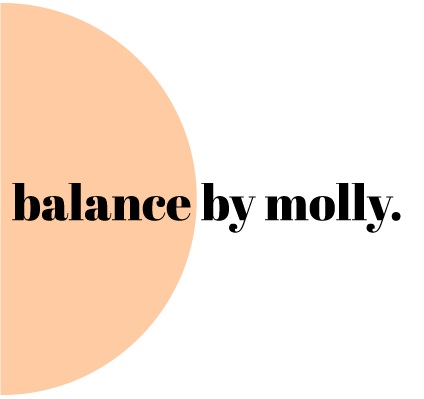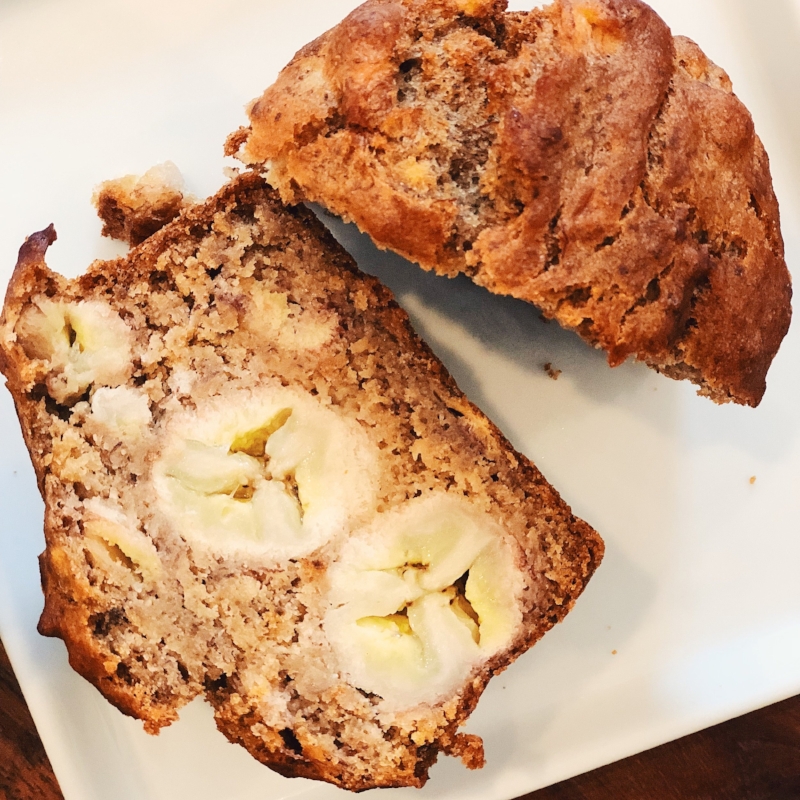About a year ago, and after much denial, I realized that bananas give me brain fog. The type of brain fog where I find it hard to concentrate with a very “heavy” feeling in my head for much of the day. Brought on by my lingering candida, symptoms like brain fog can creep in with too much sugar in my diet, even from fruit. If by all means possible, this is something that I like to avoid so I have reluctantly cut bananas out of my diet for the most part. This being said, THIS IS WHAT WORKS FOR ME AND MY BODY.
Alongside this personal realization about bananas, I noticed in the wellness community that there is an ongoing debate about whether or not this popular fruit is actually good for you. In the diet community, they are a big no-no. A fruit that is high in sugar and must be cut out if your goal is weight loss. So much chatter about a piece of fruit, so naturally I wanted to know what was up. What is true and what are some of the myths about bananas.
WHO SHOULD AVOID BANANAS?
If you have been diagnosed with candida albicans then it is best to avoid bananas while you work with a health coach to get your candida symptoms under control. Eating a banana is like opening the windows of a house during a fire, it'll greatly feed the candida. Not only does one banana contain close to 30g of sugar per serving, making it one of the highest sugar fruits there is, but it is also very high in mold content which needs to be avoided at all costs for candida sufferers.
If you have an imbalance in hormones (low thyroid, PCOS, etc.), then bananas should be avoided as well. To get your period back, clear your acne, stop hair loss, and balance your mood and hormone levels, it is wise to keep sugar (as well as dairy and caffeine) out of your diet. But you will also want to take a close look at the other foods and beverages in your diet that might be working against you with your health coach or nutritionist. Bananas will not be the cause of any diagnosis, but taking a break from them (along with other foods) for a short period of time may help with your symptoms.
WILL BANANAS MAKE YOU FAT?
Nope. Bananas will not make you fat. The myth comes from the idea that if you want to lose weight, you need to cut out sugar and bananas are high in sugar. As I always tell my clients, any highly restrictive dieting should only be as a means to an end for symptoms of a diagnosis, never for weight loss and only for 6-8 weeks maximum so as not to bring imbalance to your microbiome by cutting out certain nutrients.
But here is the thing, bananas are also high in fiber, potassium and magnesium. The high fiber content of bananas and the natural mineral relaxer, magnesium, are a natural remedy to ease and prevent constipation. Bananas can also be great for those who suffer from high blood pressure.
What we should worry about is not whether a banana will make us fat, but whether or not a banana is actually a health food. Some people claim that bananas are as close at it comes to a genetically modified food due to the fact that the bananas we eat today are a result of cloning to always grow and look and taste a certain way as well as resist disease. Let me explain first by giving you the cliff notes on their history and how they are grown today.
SO MR. BANANA, HOW DID YOU COME TO BE?
When you do the research on bananas you will find that this fruit has a complicated past. Bananas that we eat today, look totally different from the bananas that we ate 100 years ago. Up until the 1940s, Americans ate a banana varietal by the name of Gros Michel or “Big Mike.” Gros Michels were sweet, creamy, and sturdy. You could throw them in a ship's cargo hold and they would show up at their destination, perfectly ripe and unbruised. I mean, I used to put a banana in my purse to snack on at work and within 30 minutes of transport it would emerged bruised and browned. Hmph.
As Big Mike gained popularity around the turn of the century and into the 1920s, these banana crops also suffered from a fungus known as the Panama Disease and by the 1940s it was endangered. In 1947 a new banana called the Cavendish was introduced. Though the fruit was more delicate (hence the typical purse bruising) and less tasty, it was resistant to Panama disease. Cavendish bananas replaced the Gros Michel as the world's most popular banana by the 1950s. But the Cavendish are sterile, meaning the only way to keep growing them is through cloning. This is the banana that buy and eat today. Only through genetic modification can we create a banana that can resist the fungus.
IS A BANANA JUST A “FACTORY PRODUCT?”
When you think about it, virtually all of the cheap foods we find in the supermarket today — think potatoes, eggs, or ground beef — are the products of finely tuned, highly industrialized agricultural systems geared toward mass production. And, as Dan Koeppel details in his excellent book, Banana: The Fruit That Changed The World, bananas were among the first foods to be turned into a commodity. Fancy that. And fancy that a man wrote an ENTIRE book about bananas. Now that is dedication. Koeppel goes as far as saying “It's almost wrong to think of the banana as a fruit, as a product of a what we traditionally think of as farm. The Cavendish banana is a factory product in every bit the same way that a potato chip or a BMW is."
So hold up, is a banana just an industrialized fruit? All those Cavendish bananas also look and taste identical. And that's largely due to the fact that banana plants reproduce asexually.
When a farmer wants a new banana plant, he or she removes a part of an existing plant (either a side shoot, called a "sucker," or an underground root-like structure called a "corm") and puts it in the ground. In time, it will develop into its own genetically identical plant. Without sexual reproduction — a grain of pollen fertilizing an egg, as occurs with most other fruit species — there's no random variation among plants that growers need to worry about. Every banana you've ever eaten is a clone.
This is how virtually all commercially grown bananas are produced worldwide, and it means that every banana plant behaves in the same perfectly predictable manner. Their fruits grow at the same rate, in the same abundance, and ripen at precisely the same time.
ARE WE BANANAS TO EAT BANANAS?
From a nutritional standpoint, bananas are still a cellular food, meaning that they have a low carb density (percent of the food mass that is carbohydrate minus the fiber component). Versus potato chips which are an acelluar food and have a very high carbohydrate density. The carbohydrate density increases as more non-fibrous carbs are packed into a given quantity of food. So even though an author and research such as Koeppel claims that the banana is the same as potato chips he is missing one key fact: nutrients. Bananas are full of fiber, magnesium and potassium.
True you can get adequate amounts of potassium from other foods such as sweet potatoes and avocados without eating a fruit that has been cloned to perfection. And that’s really the bothersome thing here – that we have been eating a cloned fruit for nearly 75 years. One that people have developed allergies and intolerances too as well as one that does have 30g of sugar (fiber or no fiber).
Although we are not bananas to eat bananas, educate yourself on the facts to make a decision that is best for you regarding the foods you choose to have in your diet. In terms of health, yes berries for example will be higher in antioxidants and lower in sugar. But eating bananas every once in a while, is not going to make you fat and surely won’t kill you either. Because let’s face it, a toasted slice of good bread slathered with peanut butter and topped with slice banana and honey is legit the best breakfast or snack ever.
Curious about which types of bread I recommend? Check out My First 3 Healthy Food Swaps plus a worksheet to determine your own!

